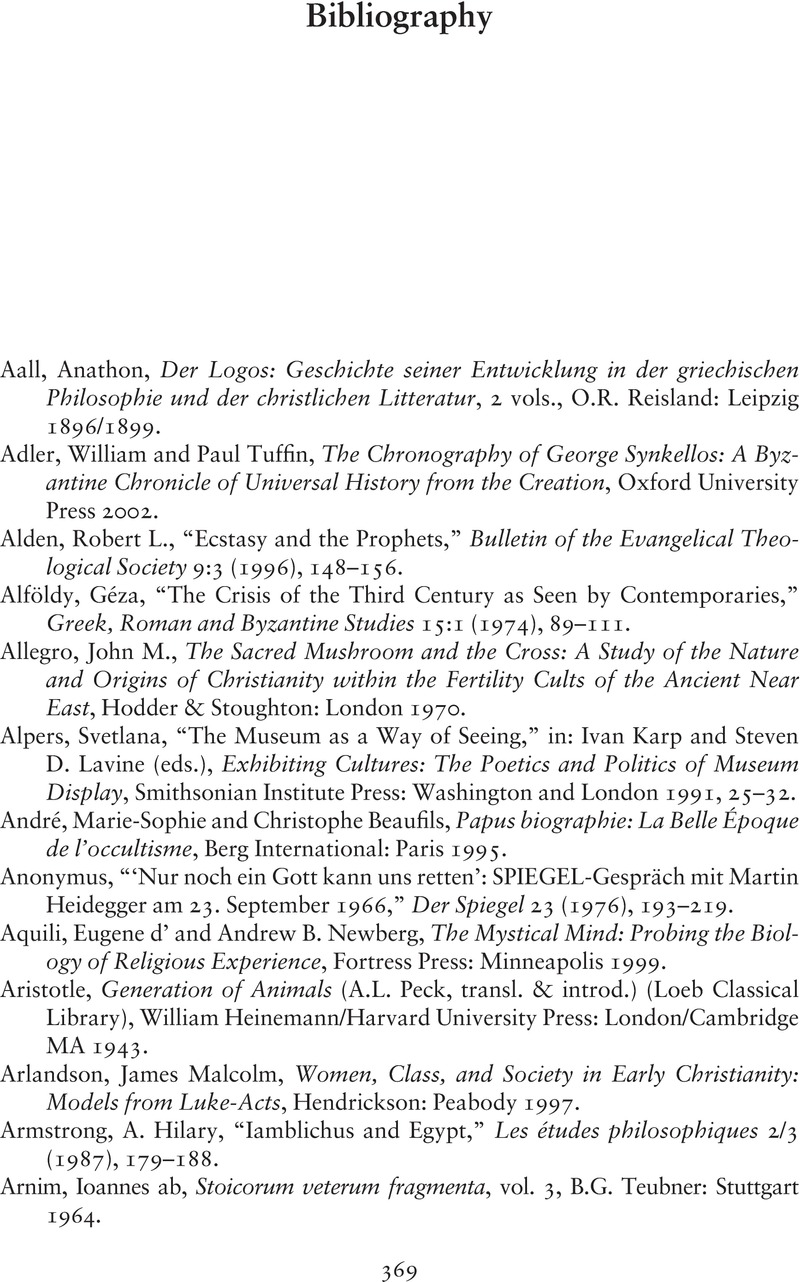Book contents
- Hermetic Spirituality and the Historical Imagination
- Hermetic Spirituality and the Historical Imagination
- Copyright page
- Dedication
- Contents
- Acknowledgments
- Abbreviations
- Prologue
- 1 Hermetic Spirituality
- 2 Heart of Darkness
- 3 The Presence of Gods
- 4 Children of Hermes
- 5 Through a Glass Darkly
- 6 Healing the Soul
- 7 The Path of Reverence
- 8 Becoming Alive
- 9 The Source
- 10 The Conquest of Time
- Epilogue
- Bibliography
- Index of Texts
- Index of Persons
- Index of Subjects
- References
Bibliography
Published online by Cambridge University Press: 16 June 2022
- Hermetic Spirituality and the Historical Imagination
- Hermetic Spirituality and the Historical Imagination
- Copyright page
- Dedication
- Contents
- Acknowledgments
- Abbreviations
- Prologue
- 1 Hermetic Spirituality
- 2 Heart of Darkness
- 3 The Presence of Gods
- 4 Children of Hermes
- 5 Through a Glass Darkly
- 6 Healing the Soul
- 7 The Path of Reverence
- 8 Becoming Alive
- 9 The Source
- 10 The Conquest of Time
- Epilogue
- Bibliography
- Index of Texts
- Index of Persons
- Index of Subjects
- References
Summary

- Type
- Chapter
- Information
- Hermetic Spirituality and the Historical ImaginationAltered States of Knowledge in Late Antiquity, pp. 369 - 410Publisher: Cambridge University PressPrint publication year: 2022



